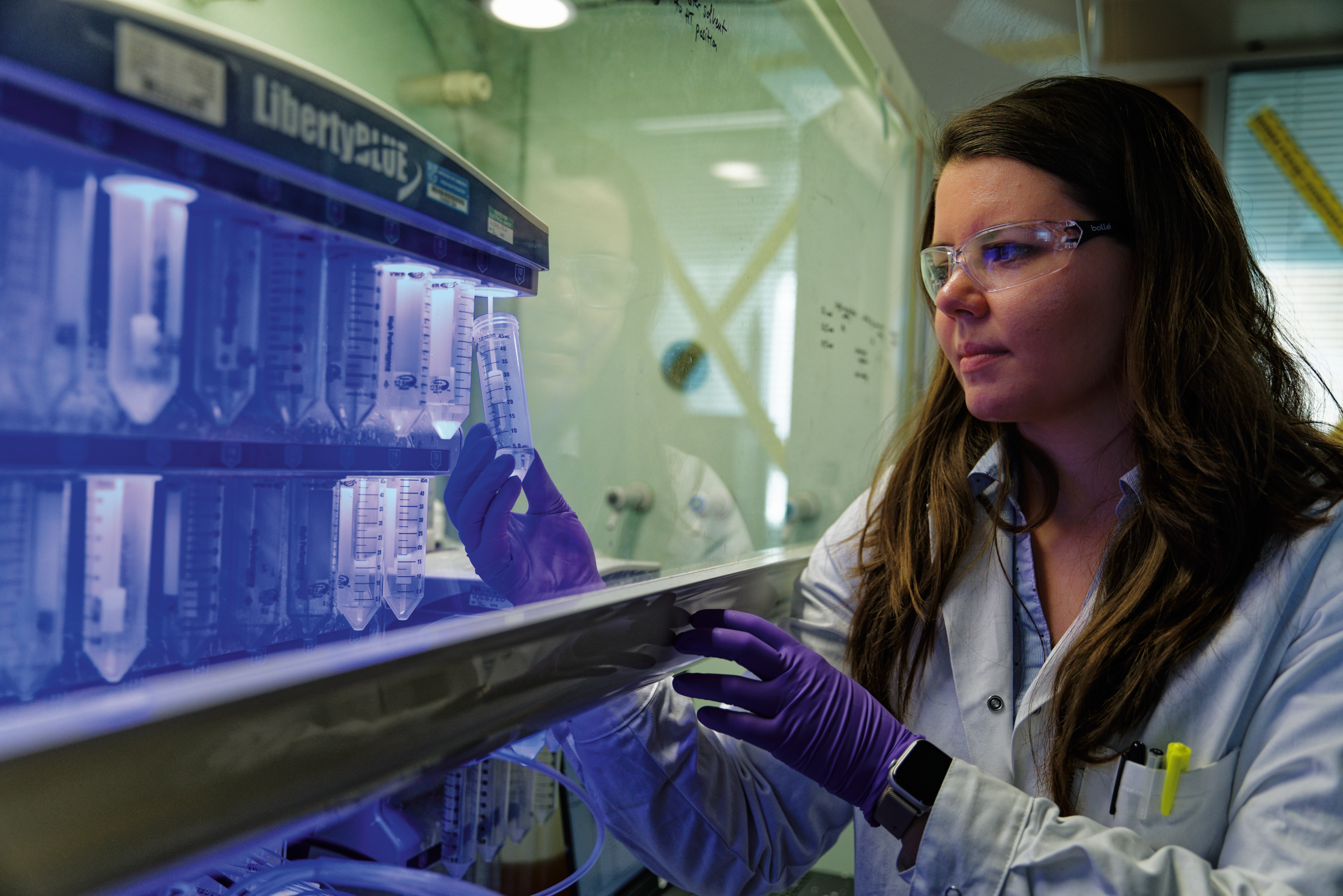
Peptides are flimsy strings of amino acids that Sona coils into a spring shape which is more resilient and stable so that they can survive inside the body. They have promising uses in medicine since they aren’t toxic, are easy to make and are versatile.
Using a technique called peptide stapling, Sona punches molecular staples onto peptides to reinforce them and imbue them with a range of interesting properties. Staples can bear a variety of things such as drugs for medicine or fluorescent dyes for imaging. Their versatility makes these peptides attractive for designers.
Sona comments: “In our research, we are focusing primarily on finding new methods for making stapled peptides but there are lots of different applications for this technology. What is novel in our stapling approach is the use of the naturally occurring amino acid tryptophan with a multicomponent reaction sequence – a combination that has never really been shown before.”
Punching staples
The key amino acid in Sona’s research is tryptophan, an amino acid that can naturally be found in milk. Tryptophan’s core has some unique properties; however, its use in peptide stapling has been limited. Sona’s research is the first to bridge all of these aspects and establish a platform for synthesising a variety of peptides.
The new method can be easily customised to make a lot of different products using just one common intermediate. This saves money and time and therefore can have a high value for pharmaceutical use.

Sona Krajkovicova for the front cover of Chem@Cam 67 taken by Nathan Pitt ©University of Cambridge
“Sona’s transformational research will help to bring chemistry, biology and medicine closer together,” comments Professor David Spring. “She is a pleasure to work with and I am so pleased all her hard work paid off.”
Sona’s research was published in Angewandte Chemie International Edition1. The article is the first time that Sona has been published as a corresponding author and she had a prestigious ‘about the author’ introduction as well. “Happy days, not gonna lie!” Sona says about the achievement.
Applications
Sona started her chemistry studies in the Czech Republic, doing her Master’s at Masaryk University in Brno and finishing her PhD at Palacký University in Olomouc. Her pursuit of the next generation of therapeutics led her to Cambridge and the Spring group.
In her introduction, she comments on her journey into peptide research: “I have a vivid recollection of that exceptionally chilly December evening, which occurred shortly after my initial visit to Cambridge. I found myself at home, sipping tea and diligently crafting a proposal for my independent fellowships. Out of nowhere, the idea struck me like a bolt of lightning! I was immensely grateful when it received financial support, allowing me to delve deeper into the topic.
“Although I had anticipated the project to be challenging, it surprised me how stubborn and not-so-easily tamed peptides could be! Thankfully, perseverance paid off and I managed to achieve success in the end.”
This article first appeared in Chem@Cam magazine Winter 2023 Issue 67 pg 23.

